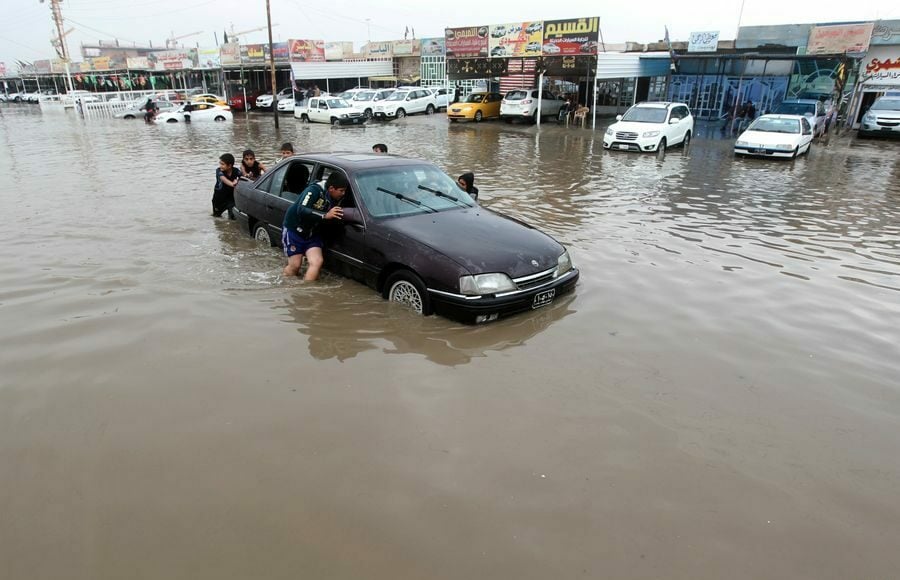A number of Arab Gulf countries, most notably the UAE, Qatar, and Oman, were subjected to an unprecedented wave of torrential rains, resulting in casualties as well as severe damage to roads and residential buildings.
UAE is the most affected
Heavy rains caused massive flooding across several Emirates, particularly northern Sharjah, Fujairah, and Ras al-Khaimah.
The UAE government established an urgent committee to limit flood damage and directed the transfer of all affected families in the eastern regions to temporary shelter sites, as well as the evacuation of people living in areas close to where the torrents took place.
The UAE Ministry of Interior confirmed that seven people of Asian origin had died as a result of the torrential rains. Brigadier General Dr. Ali Salem Al Tunaiji, the ministry’s spokesman, stated that 80 percent of those whose residences were damaged by the floods have returned home. According to Al-Tunaihi, most of the flood-damaged roads have reopened.
During the last few hours, the UAE experienced the highest rainfall in 27 years, with heavy rains falling in Dubai, Sharjah, Ras al-Khaimah, and Fujairah, causing a rise in the level of running water on several roads and forcing their closure.
The rain caused significant damage to the vehicles of citizens walking in the streets.
Rainwater floods Qatar’s streets
Qatar experienced heavy rains in the capital, Doha, and other parts of the country after the Meteorological Department warned of thunderstorms, strong winds, and high waves in some sea areas.
Heavy rain fell on Doha, prompting the Ministry of Interior to issue a warning and urge residents to follow safety precautions.
According to the Qatar News Agency, the Qatar Civil Aviation Authority confirmed that rain will continue until the end of the weekend.
Several Qatari tweeters and media outlets shared videos of the heavy rain, which flooded some streets and was accompanied by lightning and thunder in various areas, particularly in the center and south.
Oman’s valleys
The Sultanate of Oman was among the hardest hit, with the towns of Shinas, Saham, and Rustaq in the Al Batinah Governorate in the Sultanate’s northern parts experiencing rains ranging from heavy to medium, causing the flow of a number of reefs and valleys.
The torrential rains in Wadi Al-Jahour also covered a large portion of one of the mosques there, leaving only the dome and minaret visible.
The Oman Meteorological Authority predicted persistent clouds and scattered thunder rain, sometimes accompanied by active downward winds, over the Al Hajar Mountains and surrounding areas.
Furthermore, Abdulaziz Al-Hussaini, a weather researcher and member of the Tasmeyat Committee, forecasted light to heavy rains and torrential and dusty winds in the following regions: Riyadh, Jazan, Asir, Sharqiya, Najran, Oman, and the UAE.
Meanwhile, other Gulf countries, such as Kuwait and Bahrain, are bracing for the possibility of thunderstorms and a wave of heavy rains extending to them.








